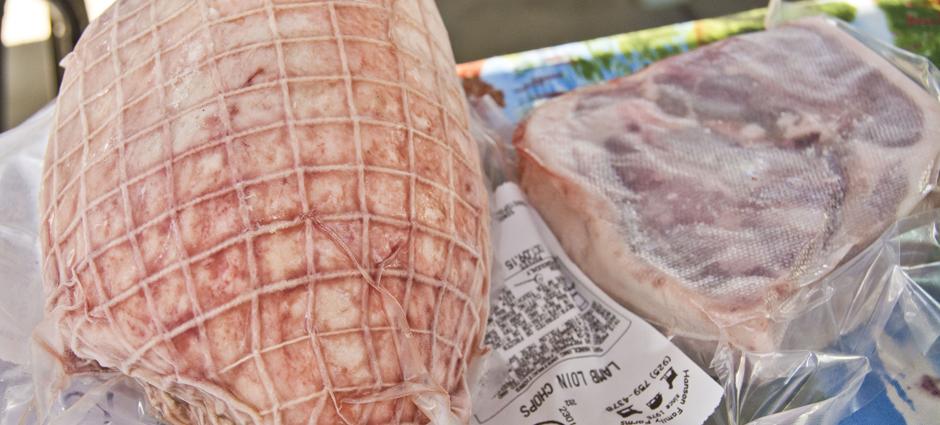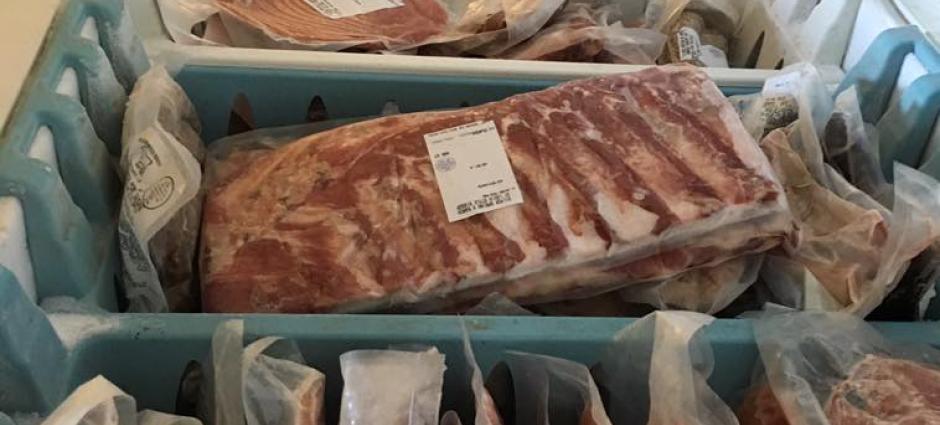Grass-Fed versus Pasture-Raised Meat
If you’re a carnivore, there’s nothing tastier than a juicy grilled steak, a lovely lamb shank, or a fat hamburger. But if you are concerned about where your meat is coming from, whether the animals were humanely treated, or whether they were fed hormones and antibiotics, it pays to do a little research and label-reading.
Finding beef and other meats that offer a beneficial and healthier alternative to factory-raised beef is of concern for many of us. Reducing our carbon footprint and buying products that take into consideration the welfare of the animals is a feature we like to encourage at our farmers’ markets. But which type of meat to buy? Even though both pasture-raised and grass-fed are a huge improvement over the alternative, there are some differences.
These differences can be both simple and complicated. Simply put, “grass-fed” refers to what an animal eats (grass) while “pasture-raised” refers to where it eats (on a pasture). A more complex answer refers to the amount of grass they’re fed.
Grass-fed: Grass-fed means that the animals eat what they were born to consume, namely grass, with little or no grain added to their diet. It means that animals eat nothing but their mother’s milk and grass from birth to harvest. The grass may be fresh or dried grass-type hay.
Eileen Hanson of Hanson Family Farms, says, “We feel it is very important for everyone to understand that meat does not come wrapped in the plastic as you see at the grocery store. All animals have to be fed what nature intended and treated and cared for kindly.” At their ranch in Clayton, they raise grass-fed beef, lamb, and goats.
Pasture-Raised: This means the animals are raised on grassland, but their diet is supplemented with more than grass. Feed and grain can be added to their diet to supplement the grass. Markegard Family Grass-Fed pastures their beef almost year-round. You’ll find Alhambra Valley Pears & Beef from Martinez also has grass-fed, humanely-raised, and delicious beef.
You will also notice that you only see grass-fed beef, lamb, and goat. You won’t see grass-fed pork or grass-fed chicken. That’s because these animals cannot live on grass alone. Pigs and chickens need supplemental feed. You will see packaging that states that their pigs and chickens are pasture-raised, though.
Shelly McMahon of Shelly’s Farm discloses, “We have always raised our hens on pasture. We believe the hens are healthier and happier when allowed to forage naturally. It is more work for the smaller family farms and more land is required but it is worth it for the higher nutritional value and delicious flavor of the eggs, not to mention the welfare of the hens.
If you want a steak that is 100% grass-fed, be sure to look for that designation on the label. This means that its diet was not supplemented. If a package says “grass-fed” but does not say 100%, it means that the animal was “finished” on grain and other supplemental feed the last two to three months of its life.
If you see “certified organic grass-fed beef” on the packaging, this means that the animals must have been raised on land that is certified organic, be allowed access to pasture, and be fed only organic material. The best of both worlds would be organic grass-fed meat.
Hopefully, this will help next time you purchase meat, pork, and chicken at your farmers’ market. Be sure to ask questions of your local rancher because he will be glad to talk about his product. Enjoy a more beneficial alternative to other meats by shopping your farmers’ market.

